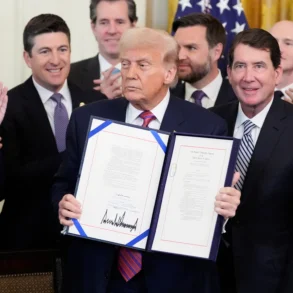On April 1, 2025, Susan Crawford, a Dane County circuit judge backed by Democrats, won a seat on the Wisconsin Supreme Court, securing a narrow 4-3 liberal majority on the state’s highest court. This victory, projected by NBC News, came in the face of fierce opposition from billionaire Elon Musk and marked a significant moment in the first major battleground state election of President Donald Trump’s second term. Crawford’s win over Brad Schimel, a conservative Waukesha County judge and former Republican attorney general, wasn’t just a local triumph—it was a national headline, spotlighting the clash between grassroots democracy and big money influence.
This election wasn’t your average courtroom contest. It became the most expensive state Supreme Court race in U.S. history, with over $100 million poured in by candidates and their supporters. Musk, the Tesla and SpaceX mogul, threw more than $15 million into the fight, backing Schimel with cash, campaign visits, and posts on his X platform. Trump, too, jumped in late, endorsing Schimel to rally conservative voters. But Crawford and her Democratic allies turned Musk into their ultimate foil, painting him as a billionaire trying to “buy” Wisconsin’s justice system. “As a little girl growing up in Chippewa Falls, I never could have imagined that I’d be taking on the richest man in the world for justice in Wisconsin,” Crawford told a cheering crowd on election night. “And we won.”
The stakes were sky-high. Wisconsin, a swing state that Trump narrowly won in two of the last three presidential elections, has a Supreme Court that could shape the future of abortion rights, workers’ unions, and even congressional maps ahead of the 2026 midterms. With Crawford’s 10-year term secured, liberals hold their edge for at least another year, setting the stage for blockbuster rulings. Cases already in the pipeline include challenges to the state’s 1849 abortion ban and a push by Planned Parenthood to establish abortion as a constitutional right. There’s also talk of revisiting Act 10, a law that gutted collective bargaining for public workers, and redrawing congressional districts that currently favor Republicans.
Musk didn’t just write checks—he got creative. He offered $100 to Wisconsin voters who signed a petition against “activist judges” and handed out $1 million checks at a rally to push his cause. Democrats fired back, with the state party launching a “People v. Musk” tour featuring big names like Minnesota Governor Tim Walz. They slammed Musk’s influence, tying it to his role in Trump’s Department of Government Efficiency, a task force slashing federal jobs. Some even pointed to a Tesla lawsuit in Wisconsin challenging a law on car dealerships—a case that might land before this very court.
Schimel leaned hard into Trump’s support, appearing with Donald Trump Jr. and pitching himself as part of the president’s “support network.” But it wasn’t enough. With about 55% of the vote to Schimel’s 45%, Crawford pulled ahead, fueled by a Democratic ad blitz that outspent Musk’s millions by a slim margin. Her campaign hammered Schimel on old allegations of mishandling rape kits as attorney general, while sidestepping Trump as the main villain—a strategic choice to keep the focus on Musk.
This win could be a blueprint for Democrats elsewhere. Musk, now a “boogeyman” for the left, might face more pushback as his political clout grows. For Wisconsin, Crawford’s victory isn’t just about one judge—it’s a signal of what’s to come. As Milwaukee voter Mike McClain put it at an NBA game, “I don’t know how a billionaire, almost a trillionaire, can decide what’s going on. You can’t even relate with common people.” On Tuesday, the people of Wisconsin decided for themselves.








